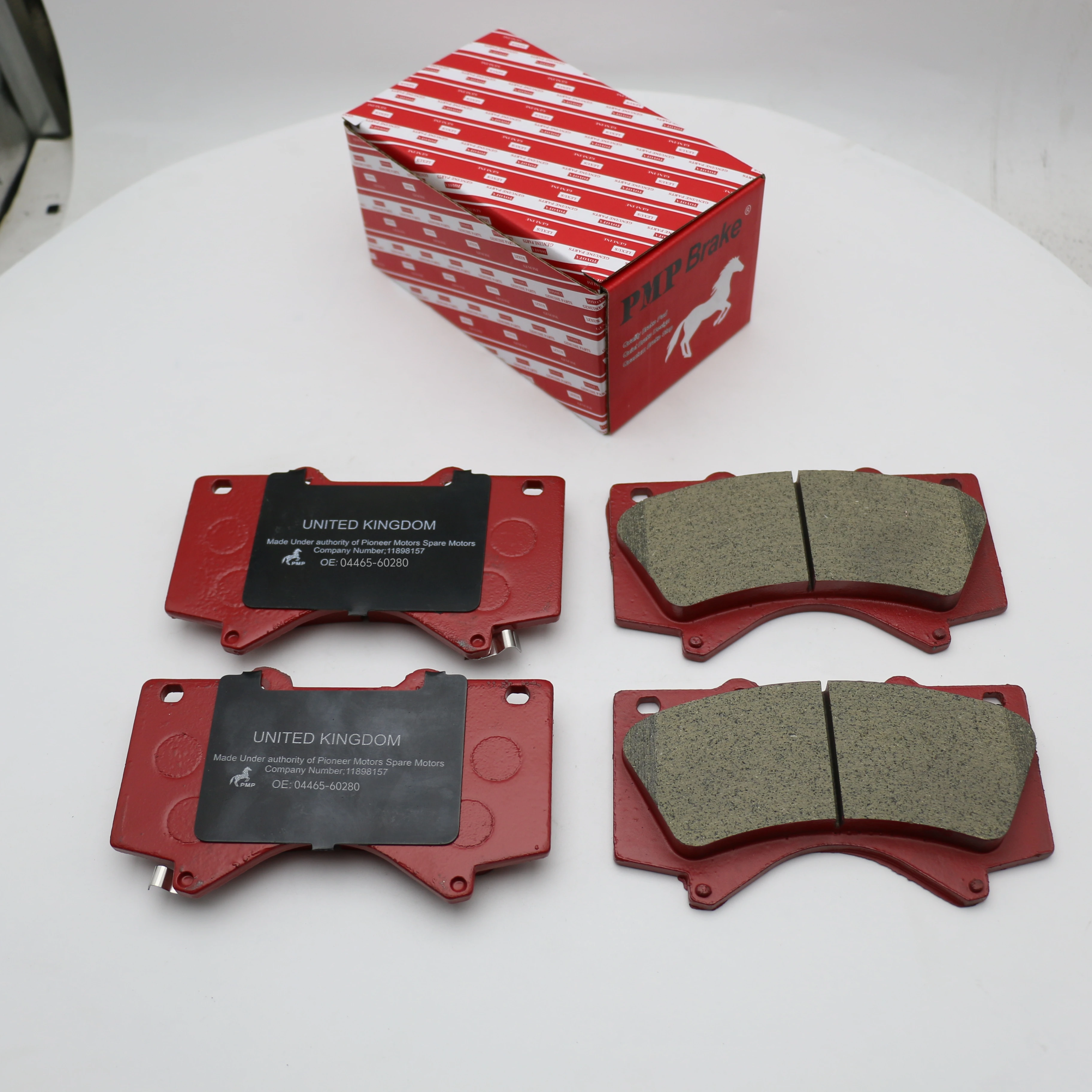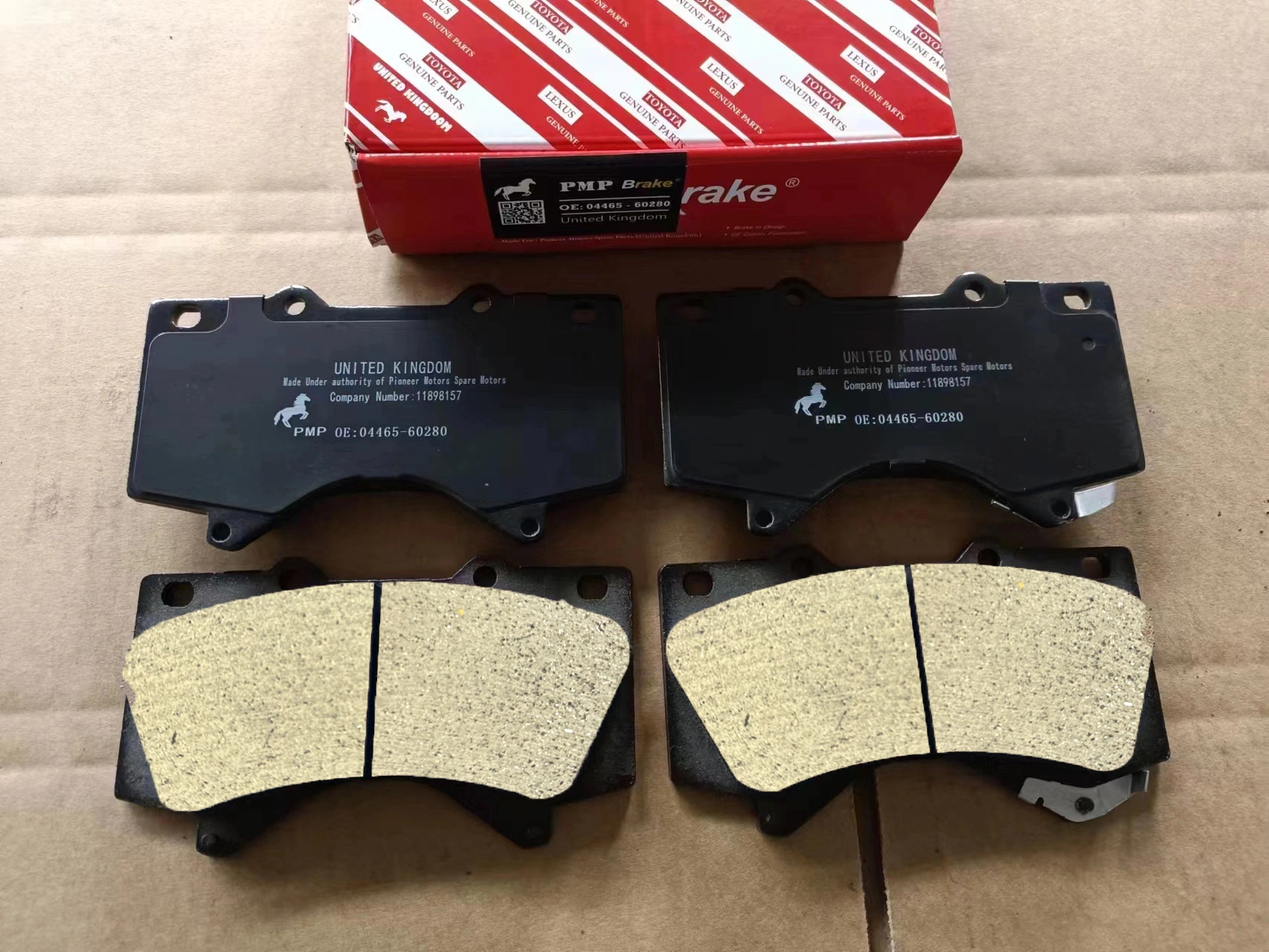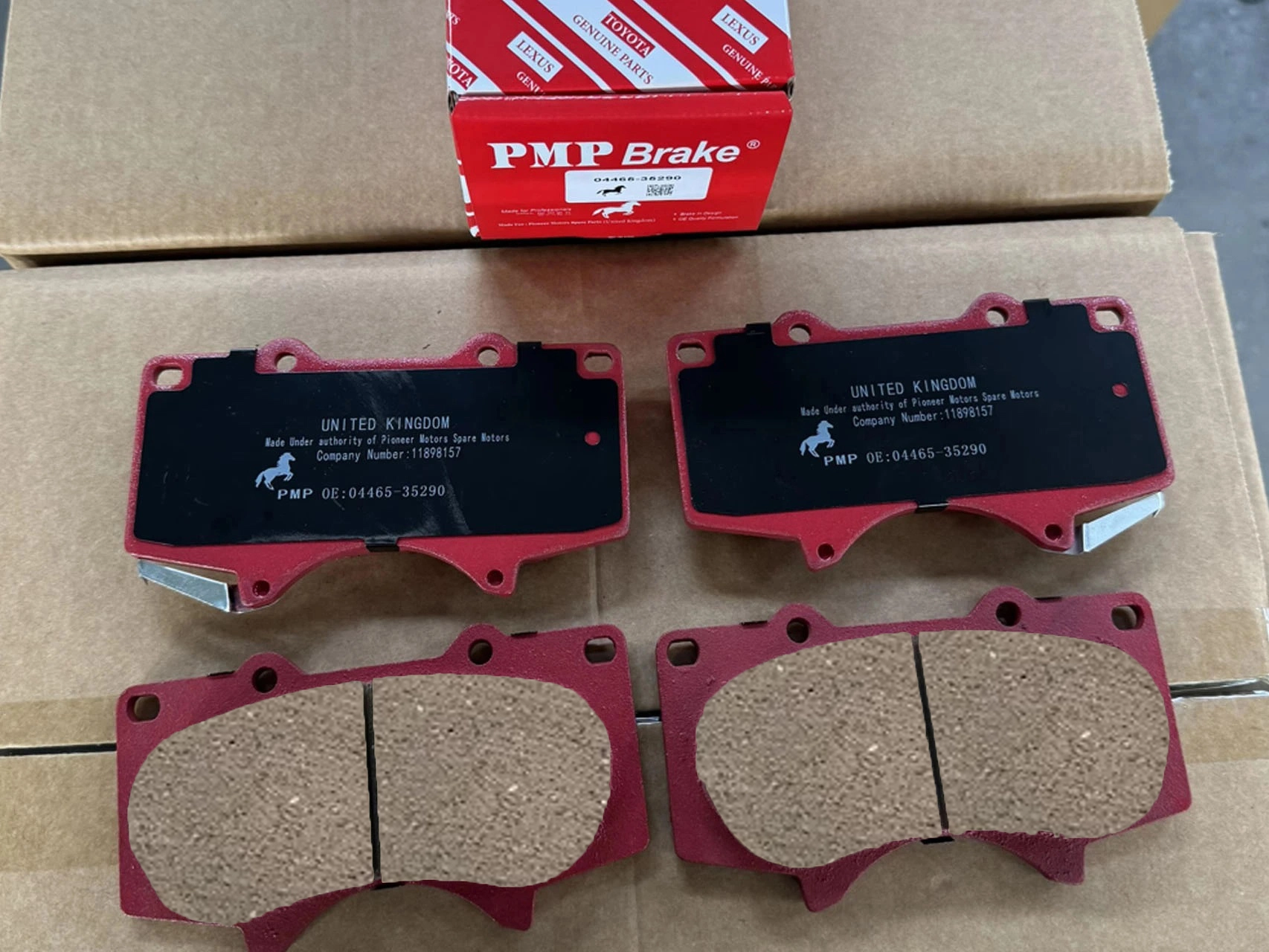Price Overview for PMP Brake Pads:
Brake pad pricing depends largely on the materials used and the order quantity for your vehicle.
Ceramic Brake Pads
Order Size: 500-1000 sets — $4.00 to $7.00 per set
Order Size: 1000-3000 sets — $3.50 to $6.50 per set
Order Size: Over 3000 sets — $3.00 to $5.50 per set
Semi-Metallic Brake Pads
Order Size: 500-1000 sets — $3.50 to $5.00 per set
Order Size: 1000-3000 sets — $3.00 to $4.50 per set
Order Size: Over 3000 sets — $2.90 to $3.80 per set
Low Metallic Brake Pads
Order Size: 500-1000 sets — $4.00 to $7.00 per set
Order Size: 1000-3000 sets — $3.50 to $6.50 per set
Order Size: Over 3000 sets — $3.00 to $5.50 per set
Yellow Semi-Metallic Brake Pads
Order Size: 500-1000 sets — $5.00 to $7.00 per set
Order Size: 1000-3000 sets — $4.00 to $6.50 per set
Order Size: Over 3000 sets — $3.70 to $5.50 per set
Ceramic Brake Pads: Quiet and Consistent Braking

Ceramic brake pads deliver smooth, noiseless braking ideal for everyday driving. Their low dust generation keeps wheels cleaner compared to other types.
They maintain stable performance over a wide temperature range, providing reliable stopping power in diverse conditions.
These pads are perfect for drivers who prioritize comfort and long-term wear resistance.
Semi-Metallic Brake Pads: Tough and Efficient

Semi-metallic pads are engineered for durability and excellent heat management, making them suited for more aggressive driving styles.
Their metal composition ensures strong braking power, though they may produce a bit more noise and dust.
Ideal for those seeking a reliable and cost-effective option without sacrificing performance.
Low Metallic Brake Pads: Enhanced Braking Strength

Low metallic brake pads provide superior stopping power, especially under demanding conditions with frequent or heavy braking.
They offer improved heat dissipation to reduce brake fade and maintain consistent performance.
These pads strike a good balance between performance and affordability for many drivers.
Factors Influencing Brake Pad Prices
The cost of brake pads varies depending on the materials used, brand reputation, and vehicle requirements. High-end materials like ceramic generally come at a higher cost compared to organic or semi-metallic pads. Installation labor fees may also affect total expenses.
Are Premium Brake Pads Worth the Investment?
Higher-priced brake pads, such as ceramic or specialty performance models, typically last longer, perform better, and produce less brake dust than economy options. For frequent drivers or those who drive under tough conditions, choosing quality pads can offer better value over time.
Typical Brake Pad Costs
On average, brake pads cost between $30 and $100 per axle, influenced by the pad type and vehicle model. High-performance or luxury cars often require more expensive pads that meet specific standards.
Where to Find Brake Pad Discounts
Discounts on brake pads are commonly available during seasonal sales, promotions by retailers, or via online platforms. Bulk purchases and coupon offers can also reduce your costs.
Why Do Brake Pad Prices Vary by Vehicle?
Brake pads for sports, luxury, or specialized vehicles cost more because of tailored materials and engineering. Standard vehicle brake pads benefit from mass production, making them more affordable.
Is It Necessary to Replace All Brake Pads Simultaneously?
Although not always mandatory, replacing brake pads in pairs (either front or rear) is recommended to ensure even braking performance and enhance safety.
